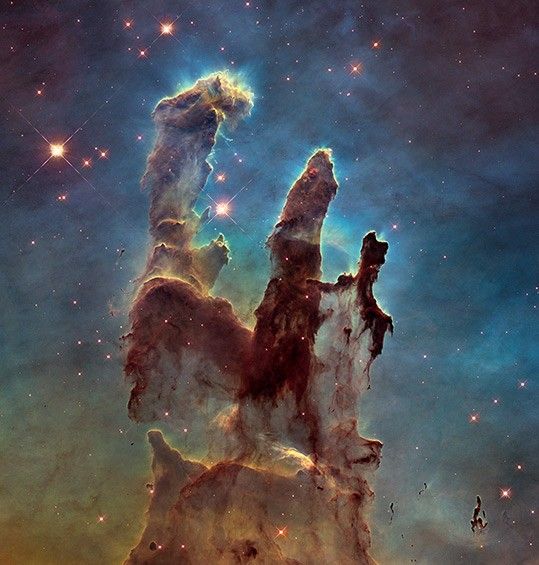1 min read
Optical-to-Ultraviolet Spectrum of Markarian 231

This simplified spectral plot shows the radiation emitted from the center of a nearby galaxy that hosts a quasar. Visible and infrared light coming from a disk surrounding a central black hole in the middle of the galaxy is measured. Surprisingly, ultraviolet light from the disk, as measured by the Hubble Space Telescope, shows a drop in radiation from the disk. This is evidence for a large gap in the center of the disk that is likely carved out by a second black hole orbiting the primary black hole.
About the Data
- Data DescriptionData DescriptionProposal: A description of the observations, their scientific justification, and the links to the data available in the science archive.
Science Team: The astronomers who planned the observations and analyzed the data. "PI" refers to the Principal Investigator.The Hubble image was created using HST data from proposal 10592: A. Evans (University of Virginia, Charlottesville/NRAO/Stony Brook University). The galaxy pair was imaged with the ACS/WFC instrument with filters F435W (B) and F814W (I) on May 10, 2002. The science team comprises: C.-S. Yan and Y. Lu (National Astronomical Observatories, Chinese Academy of Sciences, Beijing), X. Dai (University of Oklahoma), and Q. Yu (Peking University).
- Release DateAugust 27, 2015
- Science ReleaseHubble Finds That the Nearest Quasar Is Powered by a Double Black Hole
- Credit
Related Images & Videos

Artist's View of a Binary Black Hole
This artistic illustration is of a binary black hole found in the center of the nearest quasar host galaxy to Earth, Markarian 231. Like a pair of whirling skaters, the black-hole duo generates tremendous amounts of energy that makes the core of the host galaxy outshine the glow...

Quasar Host Galaxy Markarian 231
This Hubble Space Telescope image reveals a bright starlike glow in the center of the interacting galaxy Markarian 231, the nearest quasar to Earth. Located 581 million light-years away, we are seeing the galaxy as it looked before multicelled life first appeared on Earth....
Share
Details
Last Updated
Aug 17, 2025
Contact
Media
Claire Andreoli
NASA’s Goddard Space Flight Center
Greenbelt, Maryland
claire.andreoli@nasa.gov































